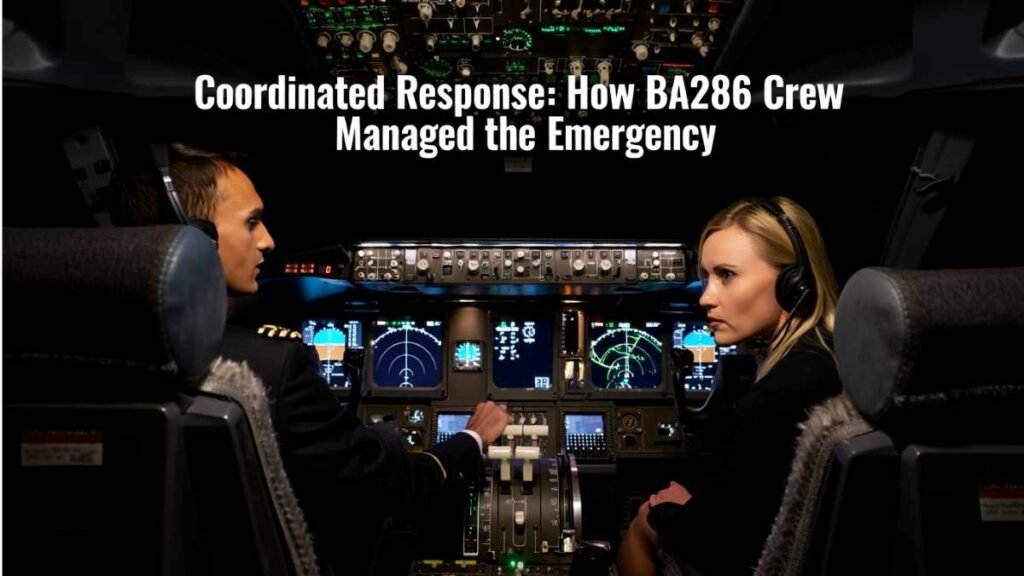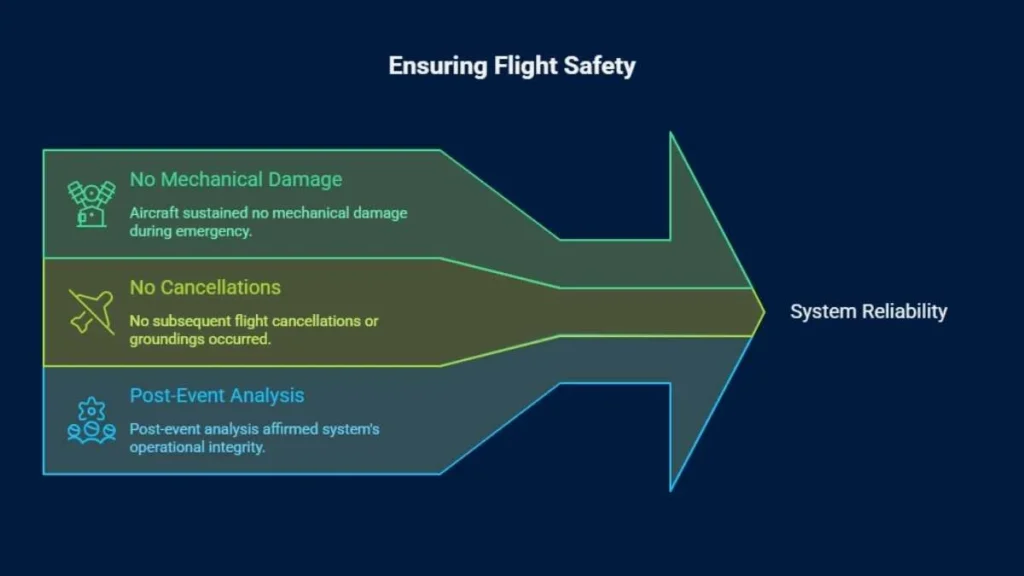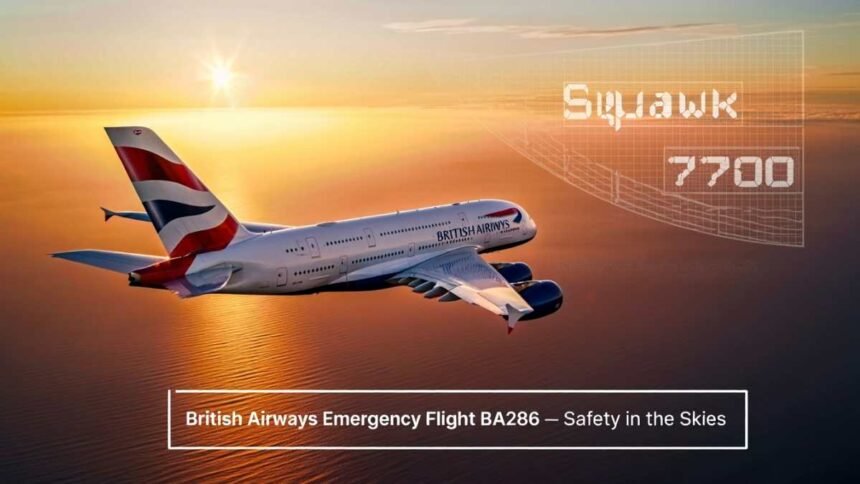British Airways emergency flight BA286 refers to a significant aviation event that demonstrated how modern flight safety systems, trained crews, and rapid communication protocols prevent potential disasters. The incident occurred when a transatlantic Airbus A380 traveling from San Francisco to London Heathrow declared an emergency mid-flight, prompting a swift and coordinated global aviation response.
In this article, we break down exactly what British Airways emergency flight BA286 was, why it happened, and what lessons it offers to the aviation industry and passengers worldwide. You’ll learn how the flight unfolded, how the crew and systems responded, and why it remains a remarkable case study in modern air safety management.
Background and Overview
British Airways flight BA286 operates one of the busiest long-haul routes, connecting San Francisco (SFO) and London Heathrow (LHR). On 26 May 2025, the Airbus A380 (G-XLEG) was flying this route when the crew declared a general emergency (squawk 7700) over Scottish airspace. This code alerts air traffic control to prioritize the flight for immediate attention.
The A380 is the world’s largest passenger aircraft and a flagship of British Airways’ fleet. It features advanced avionics, redundant systems, and real-time health monitoring that together enhance operational safety, critical in high-traffic international air corridors.

What Happened During the Emergency
At cruising altitude around 41,000 ft, the pilots transmitted a 7700 squawk code, signaling a general emergency.
Key details include:
- The flight departed SFO at 19:33 PDT, following a standard transatlantic route.
- The emergency declaration came several hours into the journey.
- Air-traffic controllers across European airspace were immediately notified.
- British Airways operations coordinated with Heathrow Airport for medical and ground response.
- The aircraft landed safely without mechanical failure reports.
Flight Timeline Summary
| Stage | Time (Local) | Details |
| Departure | 19:33 PDT | BA286 departs San Francisco bound for London Heathrow |
| Cruise | Mid-flight | Aircraft maintains FL410 (41,000 ft) |
| Emergency Declared | Over Scotland | Crew transmits 7700 (general emergency) |
| Coordination | Immediate | ATC, Heathrow ops, and emergency services notified |
| Landing | London Heathrow | Aircraft lands safely; medical team on standby |
How the Crew Responded
When British Airways emergency flight BA286 declared its emergency, the flight deck and cabin crews followed well-established standard operating procedures (SOPs):
- Assessment: The captain confirmed the nature of the issue, likely medical, requiring priority landing.
- Communication: The transponder was switched to 7700, alerting all ATC sectors.
- Coordination: Ground operations and Heathrow medical response were engaged.
- Execution: The aircraft descended and prepared for a controlled, expedited landing.
Importance of Squawk 7700
In aviation, squawk 7700 is the universal code for “general emergency.” It automatically notifies all nearby radar stations and controllers that the flight faces a serious mechanical, medical, or other issue.
System Resilience and Redundancy
Modern commercial aircraft, and especially a wide-body like the A380, incorporate multiple systems for navigation, communications, health monitoring, environmental control, and emergency response. The fact that the crew was able to declare an emergency, coordinate diversion, and complete a safe landing speaks to those systems working as intended.
Communications, Tracking & Transparency
The fact that the squawk change (7700) was observable in real-time by flight-tracking platforms (e.g., AirNav Radar, FlightAware) shows how aviation oversight and public visibility have increased. For example: “Flight BA286 … squawking 7700 (emergency)” was posted by a monitoring account.
Crew Training and Emergency Protocols
The crew’s decision to declare a general emergency at cruising altitude, rather than waiting, arguably reflects proper training, good situational awareness, and willingness to prioritise safety over schedule.
Medical Emergencies at Altitude
Medical incidents represent the most common cause of in-flight emergencies. For long-haul routes such as BA286, cabin crew receive extensive first-aid training, and aircraft carry medical kits, defibrillators, and satellite communications for ground-based doctor consultation.
Common causes of in-flight medical alerts include:
- Sudden cardiac events
- Severe allergic reactions
- Respiratory distress
- Passenger fainting or dehydration
What Passengers Can Learn
Passengers witnessing a 7700 alert or an unexpected diversion should remain calm and understand that such procedures are part of standard aviation safety measures. These alerts are routine signals that allow air-traffic control and airline teams to coordinate swiftly and ensure everyone’s well-being.
Cabin crews are extensively trained to handle a wide variety of in-flight situations, from medical issues to technical anomalies, and airlines consistently prioritize passenger health and safety over schedule commitments. Awareness of these established systems and trained professionals helps passengers stay confident, composed, and reassured that even in unusual circumstances, the aviation network is designed to protect them at every stage of the journey.
Limitations of Public Information
Because BA286’s emergency was likely medical, detailed data remain confidential to protect privacy.
However, open-source flight records confirm that
- The aircraft did not suffer mechanical damage.
- There were no follow-up cancellations or aircraft groundings.
- Post-event analysis confirmed system reliability.

FAQs
Q1: How rare are in-flight emergencies like BA286?
A: They are very rare, less than 1 in 30,000 flights declare a 7700 emergency.
Q2: Does a 7700 code always mean danger?
A: Not necessarily. It indicates priority handling, often for medical or technical reasons.
Q3: Was BA286 delayed afterward?
A: Only briefly. The aircraft resumed service after standard safety checks.
Conclusion
British Airways emergency flight BA286 stands as a clear example of aviation safety systems working exactly as designed. From early emergency recognition to a controlled landing, every layer, human, technological, and procedural, functioned in harmony to protect lives.






